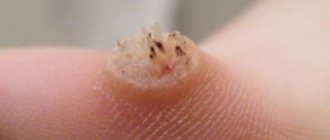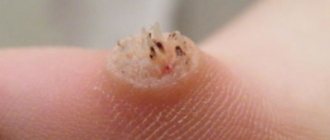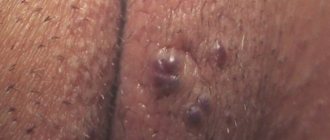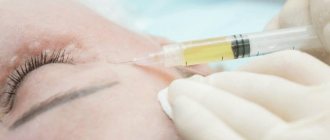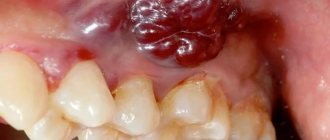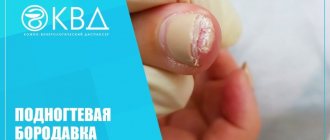Human herpes virus type 6 is an infection no less common than the herpes viruses types 1 and 2 known to many. At first, this virus remained a “virus without disease” for a long time, but recently its possible role as a cause of many human diseases has been increasingly discussed. Type 6 virus is found in all countries of the world and requires the closest attention of scientists.
- HHV-6A, HHV-6B and diseases associated with them
- How is it transmitted?
- Symptoms and manifestations in children and adults
- What tests to take for diagnosis and what the results mean (IgM, IgG)
- Treatment of children
- Treatment in adults
- Recommendations for pregnant women
Currently, the attention of doctors of all specialties is attracted to diseases caused by representatives of the huge family of herpes viruses. The relevance of herpesvirus infections is due to their so-called “universality” and the ability to lead to the development of acute and chronic diseases of various organs and systems.
The thing is that the human herpes virus ( Human Herpes Virus ) can cause a much more serious disease than most people think.
It can cause the development of many diseases, including severe damage to the central nervous system, liver, gastrointestinal tract, lungs and bone marrow. Herpes also leads to premature birth in pregnant women, interferes with the proper development of newborns and can even lead to disability of the child. Viruses of the Herpes viridae family are able to escape the influence of immune defense, which allows them to exist in the body for a long time. Find out five facts about the herpes virus
Five facts about herpes type 6
- Based on the structure of the virion and biological properties, the family is divided into 3 subfamilies of the herpes virus: alpha, beta and gammaherpesviruses (α, β and γ). Virus type 6 belongs to the subfamily of β-herpesviruses, genus Roseolovirus. It is still little studied. In its structure and amino acids, HHV-6 is most similar to HHV-7 and cytomegalovirus infection.
- People first started talking about herpes type 6 relatively recently, in 1985. This disease has been found in people suffering from lymphoreticular diseases and infected with the human immunodeficiency virus. Having begun to study HHV-6, scientists came to the conclusion that the virus can be divided into two subtypes: HHV-6A and HHV-6B. Both of these subtypes, although similar to each other, have different structures and lead to different diseases. It has also been established that HHV can affect both immunocompromised individuals and those with normal immune defenses.
- Herpes type 6 enhances the manifestations of other diseases. Infection with HHV-6A, according to scientists, plays an important role in the development of epilepsy and status epilepticus, multiple sclerosis and can interfere with organ transplantation, causing the development of infection after surgery. HSV-6B can lead to acute febrile conditions and the development of sudden exanthema, an acute infectious disease of young children that occurs with fever and skin rashes.
- In addition, HHV-6 increases a person's sensitivity to many drugs . This, when taking medications, leads to severe systemic reactions, which are manifested by rash, fever and disruption of the functioning of internal organs and systems.
- According to one version, this type of herpes is also the cause of one of the most mysterious and controversial diseases of our time - chronic fatigue syndrome. In 1992, scientists conducted a study and found that 70% of patients with complaints of persistent physical and mental weakness that arose for an unknown reason and lasted more than six months were diagnosed with HHV-6.
IgG antibodies to human herpes virus type 6 (HHV-6) are produced by the immune system starting from the second week after infection with the virus and persist throughout life. Their detection provides reliable evidence of HHV-6 infection.
Synonyms Russian
IgG class antibodies to HHV-6, class G immunoglobulins to human herpes virus type 6.
English synonyms
Anti-HHV-6 IgG, Human Herpes Virus type 6 IgG antibodies, Anti–Human Herpes Virus 6 IgG, HHV-6 Antibodies.
Research method
Enzyme-linked immunosorbent assay (ELISA).
What biomaterial can be used for research?
Venous blood.
How to properly prepare for research?
- Do not smoke for 30 minutes before the test.
General information about the study
Human herpes virus type 6 (HHV-6) was first isolated relatively recently, in 1986 (in the blood cells of patients infected with HIV). It has now been established that HHV-6 infection is widespread and has 2 subtypes - A and B - which differ genetically and epidemiologically: subtype B is more common, and subtype A is usually found in patients with immunodeficiencies. Subtype B is the main cause of sudden exanthema, a childhood illness accompanied by high fever and rash. In addition, the herpes virus can be asymptomatic and in the form of a nonspecific febrile illness. In some cases, complications from the central nervous system are observed (convulsions due to high fever, rarely other neurological complications, including encephalitis, meningoencephalitis, serous meningitis).
IgG antibodies to this virus are detected in 70-90% of adults. Primary HHV-6 infection in adults is rare and may be associated with fulminant hepatitis or infectious mononucleosis negative for the Epstein–Barr virus.
The most likely route of transmission of infection is airborne droplets, with saliva; “vertical” transmission is not excluded - from mother to child during pregnancy. The virus tends to infect lymphocytes. Replication of the virus occurs mainly in T-lymphocytes, but it can also be detected in other cells - monocytes, B-lymphocytes - as well as in brain tissue, liver, salivary glands, and endothelium.
Like other herpes viruses, HHV-6 after primary infection is able to persist in the body, becoming activated when the immune system is suppressed. Stem cell transplantation and internal organ transplantation increase the risk of infections caused by HHV-6 (in most cases, this appears to be due to reactivation of latent infection as a result of immunosuppression during immunosuppressive therapy).
Testing for HHV-6, along with testing for cytomegalovirus and Epstein–Barr virus, is recommended for the earliest possible detection of virus-associated diseases and the success of transplantation.
Currently, the possible role of HHV-6 in the development of multiple sclerosis, chronic fatigue syndrome, lymphoproliferative diseases, and its effect on the course of HIV infection is being actively studied.
To diagnose HHV-6, detection of virus-specific IgG antibodies is widely used, which are divided into subclasses:
1) IgG antibodies to early (non-structural) proteins of HHV-6
These antibodies appear in response to the activation of the virus in the cell it has infected. They are very specific, so there are no false positive results when they are detected. The presence of IgG to early early proteins of HHV-6 is an unambiguous sign of virus activity. They are produced both during primary acute infection and during relapse of chronic infection and reinfection with HHV-6.
2) Low-avidity IgG antibodies to HHV-6
10-14 days after the initial infection with HHV-6, a person without immunodeficiency develops IgG antibodies with low avidity (weak binding force of HHV-6 antigens), while the avidity of IgG antibodies constantly increases, and the proportion of low-avidity IgG antibodies decreases, so that they are completely disappear after 1-3 months. The detection of more than 50% low-avidity IgG to HHV-6 among IgG is an unambiguous sign of primary infection with this virus.
3) High-avidity IgG antibodies to HHV-6
They begin to be produced almost simultaneously with low-avidity IgG antibodies and circulate in the blood of the HHV-6 carrier throughout his life.
An analysis for IgG to HHV-6 with their classification into the subclasses described above is, of course, very informative, but is rarely used because it requires expensive immunodiagnostic kits. In this regard, the standard test for IgG antibodies to HHV-6 is an enzyme-linked immunosorbent assay (ELISA) of blood serum with the determination of the diagnostic titer of all virus-specific IgG in general and taking into account its changes.
Primary infection
Primary infection with HHV-6, as a rule, occurs in childhood (up to 3 years) and in most cases (70-80%) does not lead to an acute infectious process, but passes into a latent, asymptomatic course (virus carriage). However, the human immune system responds to the invading virus by producing antibodies. IgG appears in the 2nd week after infection in a small concentration, which continuously increases and reaches a maximum after a month. In the absence of active replication of the virus, the achieved level of specific IgG antibodies is maintained throughout life with minor fluctuations. It follows from this that if the analysis does not detect virus-specific IgG or they are found in a low titer, then a repeat test is necessary 2 weeks after the first.
If after the initial infection the virus begins to actively multiply, an acute primary HHV-6 infection develops, which in the vast majority of cases is manifested by large skin rashes and fever. In this case, virus-specific IgG antibodies also reach a peak after a month, but their titer is 2-4 times higher than during a latent course. After neutralization of active viruses, the titer of virus-specific IgG begins to gradually decrease and after 1-1.5 months approaches the level of antibodies during a latent course.
Secondary infection
The chronic (latent) course of HHV-6 may be accompanied by exacerbations of the primary latent process or relapses of the primary infection. In addition, rarely, when, as a result of antiviral therapy and effective immune defense, the primary infection with HHV-6 has resulted in the elimination of the virus, re-infection with HHV-6 or reinfection is possible.
All cases of secondary infection are characterized by the presence in the body of pre-existing IgG antibodies to HHV-6. Nevertheless, exacerbation, relapse and reinfection stimulate additional production of virus-specific IgG, and their titer begins to increase on the 1st-3rd day of the infectious process. However, since a secondary infection develops, as a rule, due to a decrease in existing antiviral immunity, the titer of IgG antibodies may be significantly lower, and the time to reach the peak of their production is significantly longer than that observed with a normally functioning immune system. As with a primary acute infection, after neutralization of active CC-6 viruses, the IgG level begins to decrease and reaches the initial value 1-1.5 months after the onset of clinical remission.
Thus, if IgG antibodies to HHV-6 are detected in the blood, the test should be repeated 2 weeks after the previous one and 1-1.5 months after remission.
What is this research used for?
To establish HHV-6 infection and the nature of the infection:
- primary infection (acute course, latent course, carriage),
- secondary infection (chronic course, exacerbation/relapse, reinfection).
When is the study scheduled?
- In the differential diagnosis of childhood infections occurring with high fever and rash.
- When diagnosing infectious mononucleosis negative for the Epstein–Barr virus.
- In a complex of examinations of patients with lymphoproliferative diseases and hematological malignancies.
- In a complex of examinations of organ and tissue recipients before and after transplantation.
- When diagnosing virus-associated diseases in HIV-infected people and other immunodeficiency conditions (chronic fatigue syndrome).
What do the results mean?
Reference values
Result: negative.
CP (positivity coefficient): 0 - 0.79.
Positive result
A single positive result clearly indicates the presence of HHV-6. However, given the widespread distribution of this virus in an inactive form among the population, to determine the nature of the chronic viral infection (active/inactive), a repeat IgG test is required 2 weeks after the previous one. An increase in antibody titer by at least 1.5-2 times compared to the previous one indicates the activity of HHV-6. To confirm remission of the viral infection, two more repeat tests are required: the first is performed when symptoms are in remission, the second is performed 1 month after the previous one. The decrease in the titer of virus-specific IgG in the second study by at least 1.5 times compared to the previous one allows us to speak with confidence about the absence of active HHV-6 and the onset of remission of the viral infection.
Negative result
- A single negative result may indicate the absence of HCH-6 or an early stage of infection (up to two weeks). It is necessary to re-test in at least 2 weeks.
- A repeated negative result clearly indicates the absence of ICH-6.
What can influence the result?
In addition to violations associated with the collection, storage, transportation of biomaterial and the conduct of the study, the state of the immune system affects the result. Due to the fact that the immune system of newborns and young children is unstable, and blood, tissue and organ donors are subject to immunosuppressive therapy, the immunity of such patients at the time of the study is weakened (compromised). In this case, the production of IgG antibodies may be reduced, leading to a false negative test result.
How is herpes virus type 6 transmitted?
The source of infection are patients with obvious clinical signs of the disease and carriers of HHV-6. The leading route of transmission is airborne droplets, but other routes, in particular household contact, are not excluded, although this happens less frequently. Transmission of the virus through sexual contact, through transfusion of infected blood and transplantation of organs and tissues from infected donors is also possible. Vertical transmission of the virus from an infected mother to the fetus is possible both during pregnancy and after childbirth. The virus can even be transmitted through saliva.
According to American and Japanese scientists, children most often become infected with the virus between the ages of 6 months and one year.
Symptoms of herpes type 6 in children and its manifestations in adults
Symptoms and conditions that should alert you and make you see a doctor:
- increased body temperature and the appearance of a pink maculopapular rash on the skin;
- blistering rashes on the skin;
- swollen lymph nodes;
- immunodeficiency states.
Testing for type 6 herpesvirus is also necessary for diseases such as rubella, measles, erythema infectiosum, enterovirus infection, otitis media, meningitis, bacterial pneumonia, drug allergies, and blood poisoning. During preventive screening studies, similar diagnostics may also be required.
What test is taken to detect herpes 6?
Differentiation between types A and B cannot be made based on serological tests and detection of IgM (antibodies formed upon first contact with infection) and/or IgG (antibodies indicating earlier contact with infection, i.e. they appear after an infectious disease has already been experienced) diseases) in the blood. For this purpose, PCR is carried out - an experimental method of molecular biology, a method for significantly increasing small concentrations of certain nucleic acid fragments (DNA) in biological material. PCR can be performed using blood, saliva, or cerebrospinal fluid.
Symptoms of HHV-6 in children
In young children (0.5-3 years), infection with the herpes virus type six may be indicated by the development of sudden erythema (infantile roseola), which makes itself felt by a sudden increase in body temperature to 40 °C. In this case, any other symptoms are most often absent. After the temperature drops, a pink rash appears on the child’s body, which first covers the face, chest and abdomen, and then spreads throughout the body. As a rule, after the rash appears, the body temperature no longer rises. Enlargement of the lymph glands may occur. Roseola infantum should not be confused with chickenpox or ARVI. A sick child must be isolated until clinical signs disappear and immediately consult a doctor.
What other manifestations of HHV-6 occur in adults?
If you have been worried about low-grade body temperature for a long time, increased night sweats, problems sleeping, weakness, lethargy, feeling depressed, it has become difficult for you to do your usual activities and all this does not go away even after rest - you may have chronic fatigue syndrome, and at the same time This means you are infected with herpes type 6. You also need specialist help.
Treatment of herpes type 6 in children
It’s probably no secret that choosing medications for a child that will help get rid of the disease without causing harm is much more difficult than for adults. Many medications cannot be used on newborns and children under one year of age, which creates a huge problem for both parents and doctors. But there are still drugs that can be used to combat type 6 herpes even in newborn babies. One of these drugs is the drug VIFERON Suppositories (suppositories), which contains human recombinant interferon alpha-2b. The course of treatment is five days, VIFERON Suppositories 150,000 ME are used once every 12 hours.
If necessary, the doctor can choose a different dosage for the child. Find out more about the safety of VIFERON drugs.
The drug has undergone a full cycle of clinical trials in a wide range of pathologies in leading clinics in Russia. The result of the studies was evidence of the therapeutic, prophylactic and immunocorrective effectiveness of the drug VIFERON for various infectious and inflammatory diseases in adults and children. It has been scientifically proven that the release form provides the drug with unique pharmacodynamic characteristics, and the presence of highly active antioxidants, vitamins E and C, makes it possible to enhance the antiviral activity of interferon. It is also impossible not to note the absence of side effects inherent in parenteral preparations of recombinant interferons (administered by injection). Due to the imperfect functioning of the interferon system at an early age, newborns and children of the first years of life show increased sensitivity to infectious diseases, with a tendency to their more severe and generalized course with a high risk of complications and the development of chronic foci of infection. Timely use of an antiviral drug can help avoid complications and severe disease.
Scheme for using the drug VIFERON Gel and Ointment for children
The antiviral drug VIFERON Gel can also be used to treat children of all ages, including newborns. To combat the manifestations of herpes type 6, it is necessary to apply a strip of gel no more than 0.5 cm long to the previously dried affected surface 3-5 times a day for 5-6 days using a spatula or a cotton swab.
VIFERON Ointment is used in children over one year old. To treat type six herpes, apply a thin layer 3-4 times a day to a previously dried affected surface. The combined use of suppositories VIFERON and VIFERON Ointment/Gel allows you to enhance the clinical effects of the therapy.
Clinical observation
Patient O., 49 years old, complained
for a burning sensation in the urethra, periodic pain in the perineum, scrotum, discomfort when urinating, during and after ejaculation.
From the anamnesis:
has been suffering from chronic prostatitis for a long time. He underwent annual therapy with antibacterial and anti-inflammatory drugs, and physical therapy with a temporary effect. In his youth, he noted frequent relapses of genital herpes. Denies other sexually transmitted infections.
Accompanying illnesses:
Parkinson's disease, takes levodopa 200 mg/day, benserazide 50 mg/day. On the recommendation of a neurologist, he maintains a regimen of increased physical activity (cycling 25–40 km per day). The disease is manifested by periodically occurring tremor of the fingers.
Digital rectal examination:
prostate gland 4x4 cm, painful, soft-elastic heterogeneous consistency, asymmetrical due to the enlarged right lobe, without focal compactions, the mucous membrane over the gland is mobile.
Chronic prostatitis symptom index CPSI - 15 (pain - 8, urinary problems - 2, impact of symptoms on daily life - 5), quality of life QoL - 4, which corresponds to a moderate severity of pelvic pain .
Using PCR method Chlamydia trachomatis, Mycoplasma genitalium, Trichomonas vaginalis, Neisseria gonorrhoeae, Ureaplasma spp., Mycoplasma hominis,
Herpes simplex virus (HSV) types 1 and 2 were not detected.
When examining prostate secretion (PSS), the content of leukocytes is 0–4 in the field of view, lecithin grains are scanty. A general urine test was within normal limits; a urethral smear revealed 0–1–0 leukocytes in the field of view.
During bacteriological examination before the post-massage urine sample: Staphylococcus
epidermidis
104 CFU/ml in both samples, which corresponds to abacterial CP/CPPS.
At the Federal State Budgetary Institution “NICEM named after. N.F. Gamaleya" of the Russian Ministry of Health conducted a real-time PCR (RT-PCR) study to determine the DNA of five HHVs: HSV-1, HSV-2, Epstein-Barr virus, cytomegalovirus, HHV-6. We used PCR reagent kits “AmpliSens HHV1/HHV2-screen-FL” and “AmpliSens EBV/CMV/HHV6-screen-FL” (InterLabService LLC, Russia). The β-globin gene was used as an endogenous internal control.
The clinical materials were: whole blood, urethral scraping (SU), urinary fluid, ejaculate. The following results were obtained: DNA of HSV-1, HSV-2, Epstein-Barr virus and cytomegalovirus was not detected. HHV-6 DNA was found in high concentrations in all clinical materials studied: in the SG - over 4 million copies/ml, in the SF - 925 thousand copies/ml, in the ejaculate - 177 thousand copies/ml. The high content of HHV-6 in the blood (600 thousand copies/ml) suggested chromosomal integration of the virus.
With uroflowmetry: maximum urine flow rate (Qmax) - 17.3 ml/s, average rate (Qav) - 8.6 ml/s, with urination volume - 157 ml. With TRUS: the volume of the prostate gland is 46 cm3 without foci of nodular hyperplasia, calcifications are visualized along the urethra.
Upon receiving the results of a virological study, the patient confirmed that he had previously been diagnosed with HHV-6 and had been treated in one of the clinics in Moscow 2 years before contacting him about this matter.
Diagnosis:
chronic pelvic pain syndrome IIIB, chronic herpes virus infection type 6.
Treatment carried out
valacyclovir 500 mg, 1 tablet 2 times a day for 3 months, VIFERON® (interferon α-2b with antioxidants - vitamins E and C) in the form of rectal suppositories, 1 suppository 3 million IU 2 times a day for 10 days , then 3 times/week. for another 3 weeks.
During the course of treatment, the patient underwent repeated studies of the life span of the patient twice - after 2 weeks. and 4 weeks from the start of treatment. The leukocyte count was 40–60 per field of view, which is why the initial diagnosis was changed to CP/CPPS IIIA.
By the end of therapy, my state of health subjectively improved. The most noticeable improvement was manifested in the form of a decrease in urethral burning and a decrease in pain during and after ejaculation. The score on the CPSI scale on the 90th day was 8 (4+1+3) points, on the QoL scale - 2 points, i.e. there was a decrease in all indicators.
Microscopy of the lifespan: leukocytes 10–15 in the field of view, the content of lecithin grains is moderate. Virological testing revealed a significant decrease in HHV-6 concentrations (Table 1).
Digital rectal examination: prostate gland 4x4 cm, practically painless on palpation, soft-elastic consistency, asymmetrical due to the enlargement of the right lobe, without focal compactions, the mucous membrane over the gland is mobile.
Subjectively, the course of the existing neurodegenerative disease did not change during the observation period.
Thus, in the patient, the only probable etiological agent of CP/CPPS IIIA was HHV-6. Against the background of specific antiherpetic therapy and interferon therapy, there was a decrease in pain, symptoms of dysuria, and an improvement in clinical and laboratory parameters (viral concentration, CPSI score). High final concentrations of HHV-6 with a good clinical response can be explained by the possible chromosomal integration of the virus, in which every cell of the body contains its genetic material.
It is important to note that the patient’s main complaint was a burning sensation in the urethra, and the maximum concentration of the virus was in this urogenital locus. As a result of antiviral therapy, which included the drug VIFERON® (interferon α-2b with antioxidants - vitamins E and C) in the form of rectal suppositories, it was possible to reduce the concentration of the virus in the contents of the urethra by two orders of magnitude, which was sufficient to eliminate urethral symptoms.
Subsequent years of observation of this patient showed that the symptoms of CP/CPPS were mild in severity and did not force the patient to seek medical help. In the future, a more effective therapy in this case may be genomic editing using short palindromic repeats, regularly spaced in groups, which has shown a good antiviral effect in laboratory animals [13].
This case, to our knowledge, is the first report of chromosomally integrated HHV-6 associated with CP/CPPS.
Treatment of herpes type 6 in adults
For the treatment of adults, VIFERON 1,000,000 IU is used twice a day for 10 days. Treatment of diseases associated with herpes type 6 is a labor-intensive and time-consuming task, so it may be necessary to repeat the course of treatment several times at short intervals.
What to take during pregnancy
For pregnant women from the 14th week of gestation, the drug VIFERON Suppositories is recommended at a dosage of 500,000 IU with further administration of maintenance courses according to the instructions for medical use. Gestation is, in fact, the same pregnancy, only its duration is determined by the number of full weeks of gestation that have passed from the date of the first day of the last menstruation to the birth of the child.
Scheme for using the drug VIFERON Gel and Ointment for HHV-6 during pregnancy
When treating with VIFERON Gel, a strip of gel no more than 0.5 cm long is applied using a spatula or a cotton swab / cotton swab to a previously dried affected surface 3-5 times a day, the course of treatment is 5-6 days. If necessary, the duration of the course is increased until clinical manifestations disappear.
VIFERON Ointment is applied 3-4 times a day in a thin layer to the previously dried affected surface. This treatment regimen with VIFERON Gel and Ointment is also suitable for pregnant women from the first week of gestation.
Author of the article
Belyaev Dmitry Alexandrovich
General doctor
Reference and information material
Loading...
Take other surveys
Treatment
Currently, there are no methods to completely rid a person of this virus. There is no point in treating the primary infection; it is wiser to let the body develop lifelong immunity.
After symptoms appear, the following drugs are used in treatment:
- ganciclovir;
- cidofovir;
Phosphorus works well in the treatment of herpes virus type 6, and the popular acyclovir shows relatively low effectiveness.
Antipyretics (paracetamol and ibuprofen derivatives) are used as drugs to relieve symptoms. When treating children, Nurofen is most often prescribed. Doctors emphasize that taking interferon-based drugs reduces the risk of exacerbation. But in order to prevent reactivation of the virus, interferon treatment should not be carried out. It is more expedient to use a set of preventive measures.

